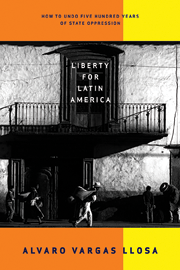MANAGUA, Nicaragua—Political walls don’t work. East Berliners desperate for freedom smashed the Berlin Wall. The Mongols overrode the Great Wall of China. The Greeks penetrated the wall that guarded Troy. And immigrants bypassed the San Diego-Tijuana “tortilla wall” built in the 1990s to keep aliens out of the United States.
So why did U.S. legislators approve, and why did President Bush promise to sign into law, a $1.2 billion package for a 700-mile fence along the border with Mexico? I put that question to Mexican President-elect Felipe Calderon and to some Central American leaders last week. The answer? In order to be seen to be doing something. Everyone agrees that members of Congress responsible for the Secure Fence Act have scant faith in their own creature. In fact, they have given the government much leeway to use the money for other purposes, such as building roads.
Just after the bill was approved, Bush said, “Enforcement alone is not going to work.” He knows what he is talking about: Various types of enforcement mechanisms have been in effect since the 1990s and yet the migratory tide has not ebbed. Sixty percent of illegal immigrants now in the United States came in during the last 10 years.
The fence sends a terrible signal to U.S. allies in Latin America. Few foreign leaders are more in tune with “American” values than Felipe Calderon. He may or may not deliver, but his vision is quite clear: “Twenty years from now,” he told me, “I would like to see a real free-trade area in North America, one that does not limit itself to the free flow of goods and services but also includes free labor mobility. Americans have nothing to fear. If we continue to engage in reform and lure much more investment into Mexico, we will create millions of jobs and thereby stem illegal migration; eventually we will have reasonable flows back and forth, as has the European Union today between countries that used to be at different stages of development.” On this matter, the advanced ideas are clearly coming from the South.
Central America—the second largest source of migration into the U.S.—is being absurdly punished. Against virulent domestic opposition, some Central American leaders have sent soldiers to Iraq just to be perceived as pro-American. El Salvador has engaged in the most profound free-market transformation in the hemisphere, except for Chile, and managed to reduce poverty to 35 percent of the population in the last decade. In the eyes of most Salvadorans, the fence means that nobody in Washington really cares.
The pro-American candidate in Nicaragua’s presidential campaign, Eduardo Montealegre, who is closing in on Daniel Ortega (yes, the same Daniel Ortega who set Central America aflame in the 1980s) is now looking as if Washington has pulled the rug from under his feet. Not to mention the fact that all these countries recently signed the Central American Free Trade Agreement against considerable local opposition.
None of this matters to U.S. legislators desperate to be seen to be doing something before the November elections. They have not even bothered to look at the hard evidence belying the claims made to justify the fence. Who says there are “too many” immigrants? In 1910, immigrants constituted 14 percent of the U.S. population; today, the proportion is 11 percent. Who says immigrants don’t speak English? Nine out of 10 are bilingual and the second generation speaks better English than Spanish. Who says most immigrants get more in government services than they pay in taxes? According to the National Academy of Sciences, the average immigrant, over the course of a lifetime, will pay $80,000 more than he or she will get in government services.
U.S. legislators know this. And Bush, who is at heart pro-immigration but does not want to alienate his party, knows this. Most walls in the history of civilization were walls of necessity—the necessity to keep enemies or freedom away. This time, it’s a wall of choice. The choice to be seen to be doing something that everyone knows will never work—and may perhaps never actually be completed because, by the time they figure out how to erect the fence across the rugged bluffs and ravines of southern Arizona, Mexico could become a first-world nation and gringos could be flocking to the south!












